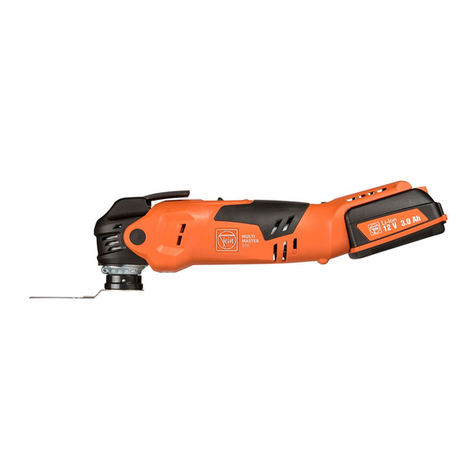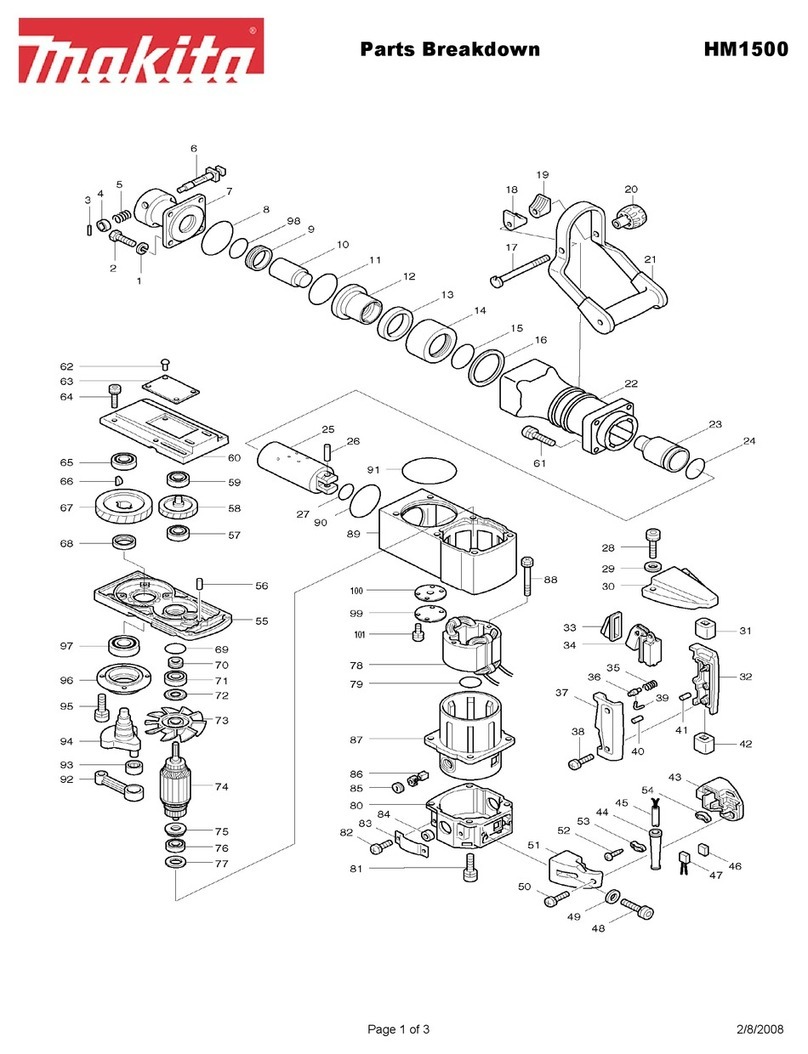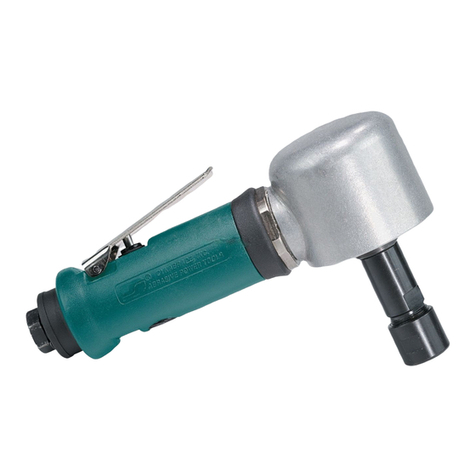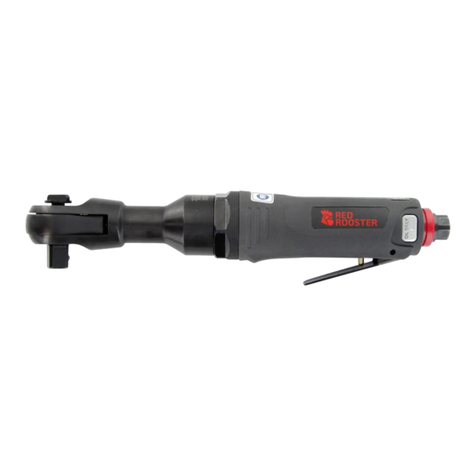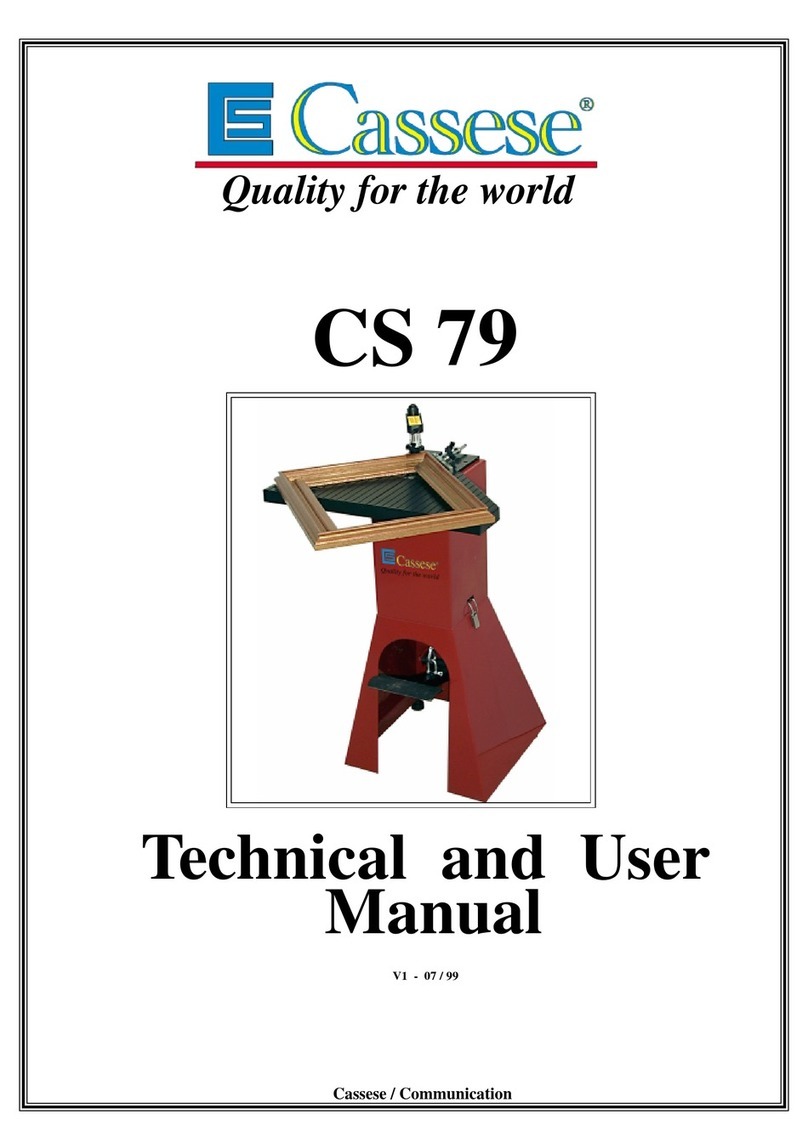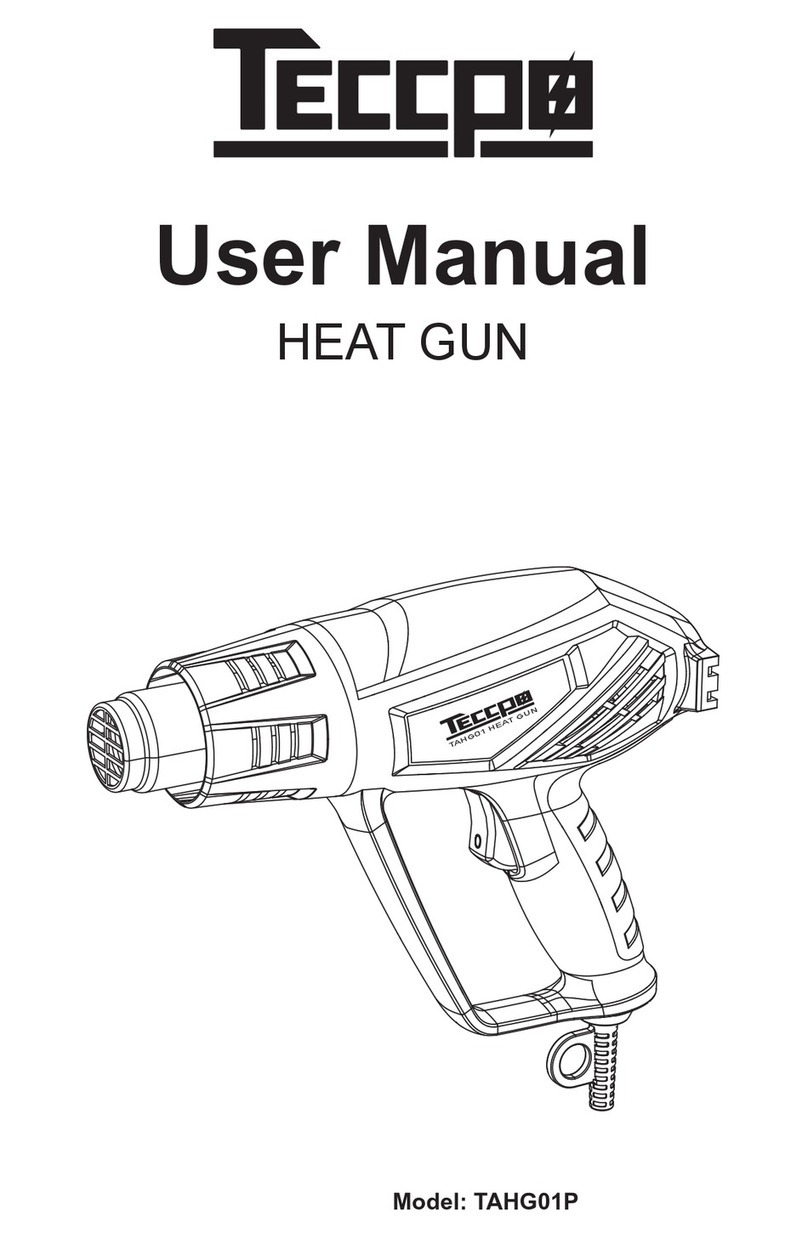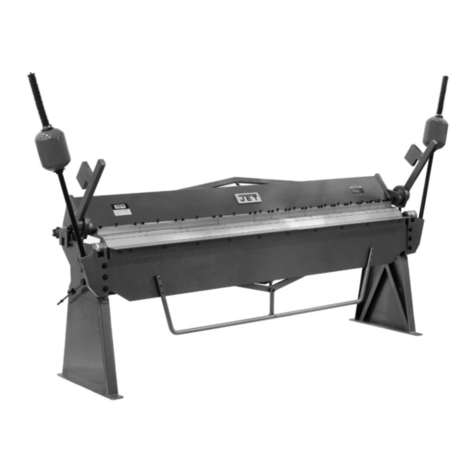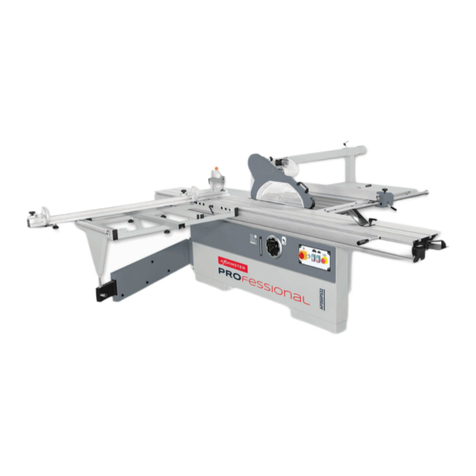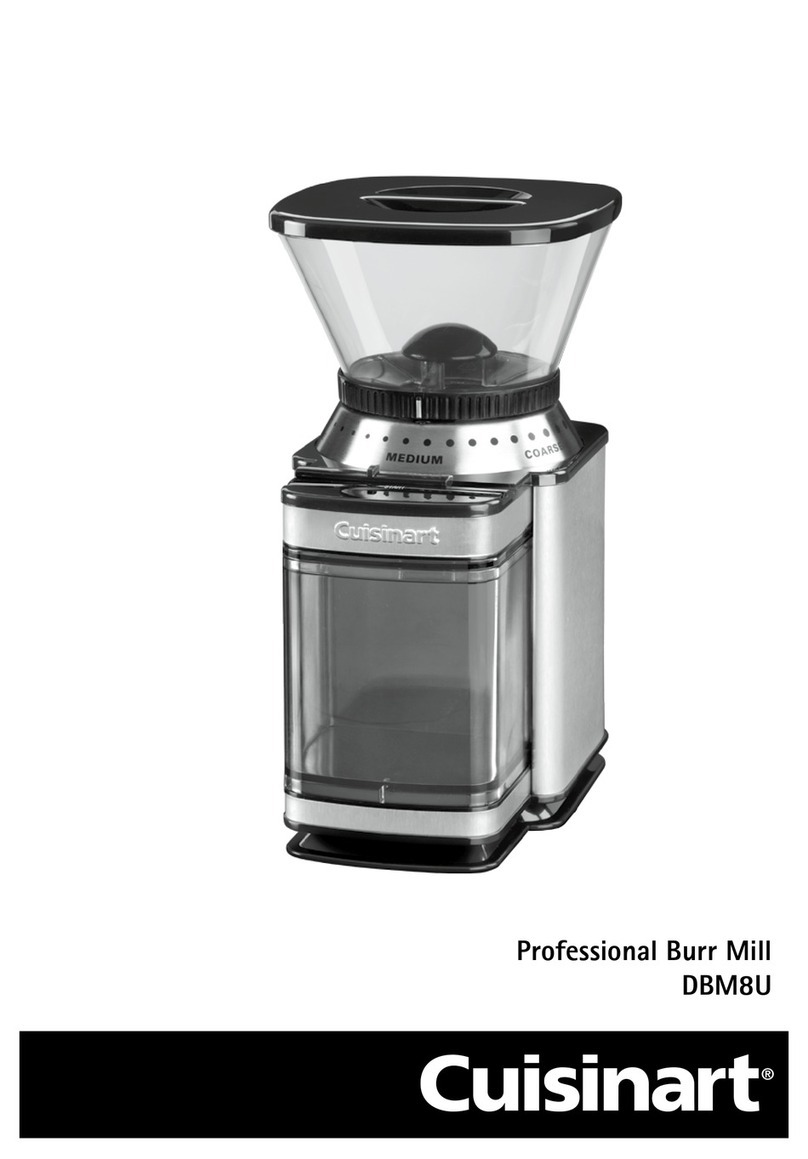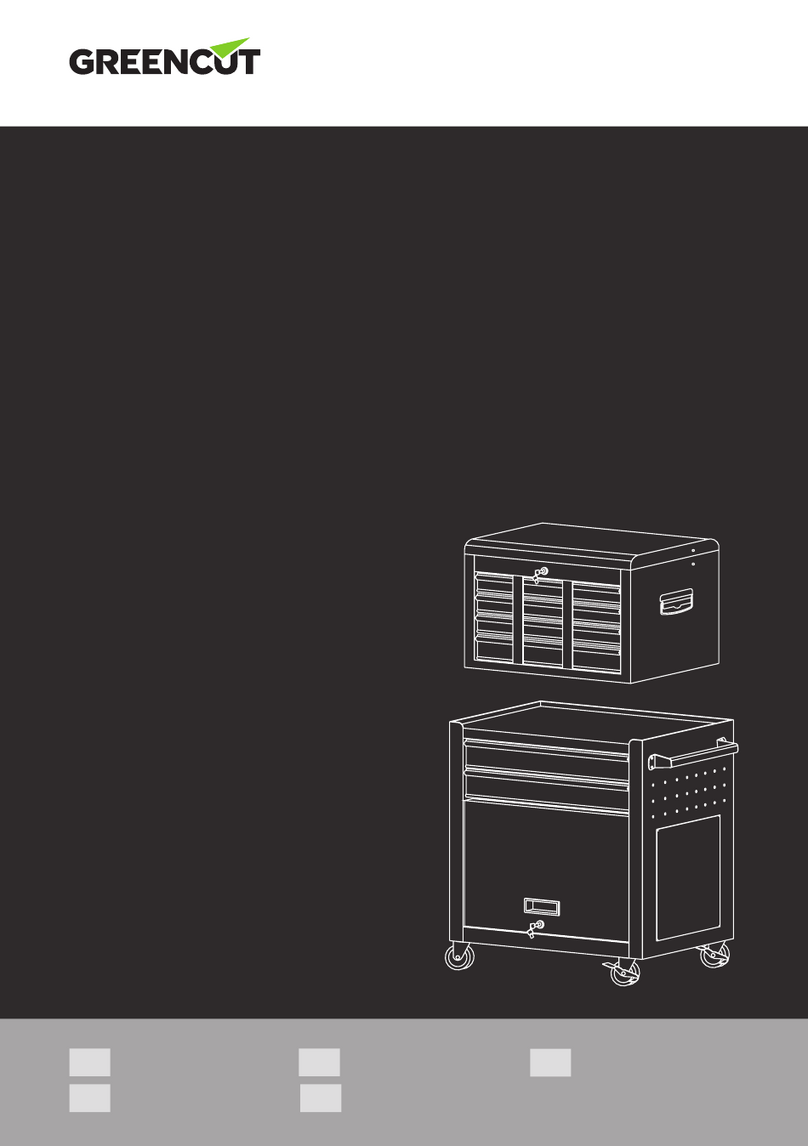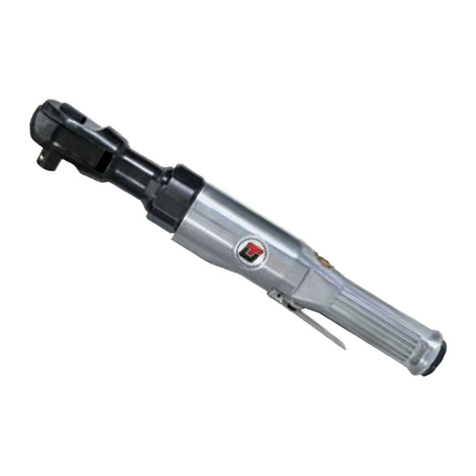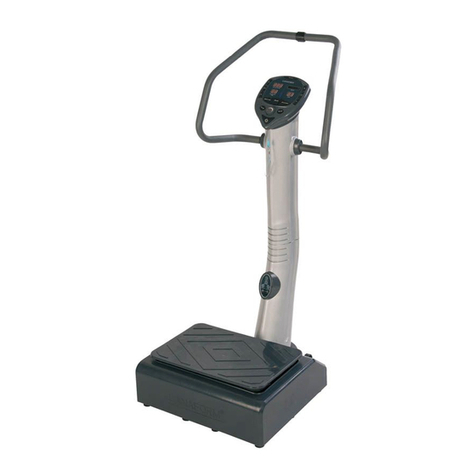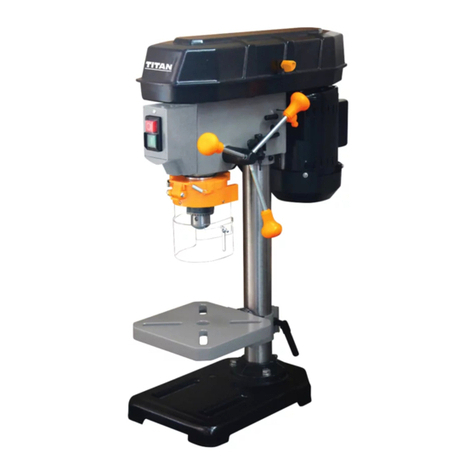Nitronic ST730T User manual

www.nitronic.ch - 1 -
Nitronic AG
Mattenstrasse 11
CH – 2555 Bruegg Tel. +41 32 373 7070
Switzerland Fax +41 32 373 70
75
Coax Stripping Machine
ST730T
Operating manual
Stand: V1.1 preliminary
Subject to change without notice!
Publisher:
Nitronic AG
Mattenstrasse 11
CH-2555 Brügg
Phone +41 32 373 7070
Fax: +41 32 373 7075
Web: www.nitronic.ch
Email:
info@nitronic.ch

www.nitronic.ch - 2 -
Nitronic AG
Mattenstrasse 11
CH – 2555 Bruegg Tel. +41 32 373 7070
Switzerland Fax +41 32 373 70
75
Machine Description............................................................................................................ 6
Unpacking the ST730T....................................................................................................... 6
Touchscreen, Connections................................................................................................. 7
Touchscreen ...................................................................................................................... 7
Additional Functions ..................................................................................................... 8
Basic settings of the machine ....................................................................................... 9
Fig. 1. Rear panel .................................................................................................. 10
Connections ..................................................................................................................... 10
Mains Connection ....................................................................................................... 10
Remote Control .......................................................................................................... 10
RS 232 C ............................................................................................................... 10
Switch .................................................................................................................... 10
Electromagnetic Immunity (EMI)................................................................................. 10
Set up.................................................................................................................................. 11
Fig. 2. Remove protective foam ............................................................................. 11
Fig. 3. Remove safety cover / place machine in position ....................................... 11
Fig. 4. Toggle main switch (A) to I ......................................................................... 11
Setting the Mains Voltage ................................................................................................ 12
Fig. 5. Fuse holder................................................................................................. 12
Exchanging the Mains Fuses ........................................................................................... 12
Operation............................................................................................................................ 13
Testing of Functionality .................................................................................................... 13
Fig. 6. Stripping of sample cable............................................................................ 13
Programming ................................................................................................................... 14
Processing Steps........................................................................................................ 14
Programming of (Step) in graphic mode........................................................................... 15
1. Turn the unit ON ................................................................................................ 15
2. Allocate a program memory position .................................................................. 15
3. Select graphic mode .......................................................................................... 15
4. Select 3 steps .................................................................................................... 15
5. Step 0 ................................................................................................................ 16
4. Step 1 ................................................................................................................ 16
5. Step 2 ................................................................................................................ 16
6. Step 3 ................................................................................................................ 17
7. Calling up the Program ...................................................................................... 17
8. Maintaining a List of Programs........................................................................... 17
9. Optimizing the Quality ........................................................................................ 17

www.nitronic.ch - 3 -
Nitronic AG
Mattenstrasse 11
CH – 2555 Bruegg Tel. +41 32 373 7070
Switzerland Fax +41 32 373 70
75
List of Programs..................................................................................................... 17
List of Programs (Example).................................................................................... 19
Auxiliary Functions ........................................................................................................... 20
1. Open blades prior to pull-off (Waybck).............................................................. 20
2. Partial Strip (Par Strip) ....................................................................................... 20
3. Feed rate and rotation time (Feed und RTime) .................................................. 21
Blade feed rate (Feed) ........................................................................................... 21
Rotating time (RTime) ............................................................................................ 21
4. Rotation during pull-off (Rot) ................................................................... 21
5. Counter .............................................................................................................. 21
6. Memory access locking code (Code)................................................................. 22
7. Joining of multiple programs (Sequence) .......................................................... 22
8. Exchange of an Steps with an other Step (Swap Step) ...................................... 23
9. Copying of memory contents (Copy Cable)........................................................ 23
10. Copying of Steps (Copy Step) ......................................................................... 24
Basic settings ................................................................................................................... 25
1.Toggle units Millimeter / Inch.............................................................................. 25
To toggle the units on the Nitronic ST730T from mm to inch, proceed as listed below 25
2. Micro Coax Mode ............................................................................................... 25
3. Autobaud OFF.................................................................................................... 25
4. RS232................................................................................................................ 26
5. Direction of rotation (Rotary Dir.)....................................................................... 26
6. Touchscreen calibration (Calib. Touch) 26
7. Deleting of memory contents (Del. Memory) .................................................... 27
8. Calibration of the blades (Calib. Blades) ............................................................ 27
Maintenance....................................................................................................................... 28
Service guidelines ............................................................................................................ 28
Replacing the stripping blades ......................................................................................... 28
Loosen wire catcher............................................................................................... 28
Fig. 7. Loosen set screws ...................................................................................... 28
Fig. 8. Centering guide lever.................................................................................. 29
Fig. 9. Remove stripping blades ........................................................................... 29
Fig. 10. Push both stripping blades ................................................................... 29
Fig. 11. Inserting the adjusting pin......................................................................... 30
Fig. 12. Centering of the stripping blades using the adjusting pin .......................... 31
Centering the centralizers ................................................................................................ 33

www.nitronic.ch - 4 -
Nitronic AG
Mattenstrasse 11
CH – 2555 Bruegg Tel. +41 32 373 7070
Switzerland Fax +41 32 373 70
75
Fig. 13. Trigger contact.......................................................................................... 33
Fig. 14. Pull off protective ring ............................................................................... 33
Fig. 15. Positioning carriage .................................................................................. 34
Fig. 16. Shift stripping blades outwardly ................................................................ 34
Fig. 17. Adjusting the centralizers with the eccentric.............................................. 34
Fig. 18. Mount calibration kit onto the stripping head............................................. 35
Fig. 19. Threaded spindle ...................................................................................... 35
Fig. 20. Slightly secure the calibration kit............................................................... 35
Fig. 21. Open blade holders................................................................................... 36
Fig. 22. Centralizers............................................................................................... 36
Fig. 23. Centering the stripping blades using the brass sleeve .............................. 37
Centering the grippers with the calibration kit................................................................... 37
Fig. 24. Brass sleeve, 5.2 mm ............................................................................... 38
Fig. 25. Insert spacer............................................................................................. 38
Fig. 26. Centering the grippers .............................................................................. 38
Fig. 27. Adjust distance between grippers ............................................................. 39
Fig. 28. Gripper holder screws............................................................................... 39
Fig. 29. Final check................................................................................................ 39
Adjusting of the trigger contact......................................................................................... 40
Fig. 30. Loosen drive element................................................................................ 40
Fig. 31. Shift drive element .................................................................................... 40
Fig. 32. Adjust trigger contact ................................................................................ 41
Fig. 33. Moving contact element ............................................................................ 41
Fig. 34. Adjust trigger stroke.................................................................................. 41
Adjusting the clamping force ............................................................................................ 42
Fig. 35. Adjusting the clamping force..................................................................... 42
Replacing the toothed belt................................................................................................ 42
Fig. 36. Remove release rod.................................................................................. 42
Fig. 37. Remove locknut......................................................................................... 43
Fig. 38. Dismantle stripping shaft........................................................................... 43
Fig. 39. Axial bearing clearance............................................................................. 43
Cleaning and Inspection................................................................................................... 44
Cleaning of the work space......................................................................................... 44
Fig. 40. Move blade holders inwards...................................................................... 44
Cleaning the stripping blades and centralizers............................................................ 44
Cleaning of the grippers ......................................................................................... 44
Lubrication Schedule........................................................................................................ 45
Fig. 41. Points of lubrication .................................................................................. 45
Diagnostic, Troubleshooting............................................................................................. 46
General....................................................................................................................... 46
Troubleshooting checklist ................................................................................................ 47
Technical data.................................................................................................................... 51
Basic equipment, spares, options.................................................................................... 52
Basic equipment............................................................................................................... 52

www.nitronic.ch - 5 -
Nitronic AG
Mattenstrasse 11
CH – 2555 Bruegg Tel. +41 32 373 7070
Switzerland Fax +41 32 373 70
75
Spare parts list ................................................................................................................. 52
Wear parts ....................................................................................................................... 52
Options............................................................................................................................. 52
Block diagram.................................................................................................................... 53
Index ................................................................................................................................... 54

www.nitronic.ch - 6 -
Nitronic AG
Mattenstrasse 11
CH – 2555 Bruegg Tel. +41 32 373 7070
Switzerland Fax +41 32 373 70
75
Machine Description
The microprocessor controlled coaxial cable stripping machine ST730T is designed to
strip wires and coaxial cables up to 7 mm outer diameter and strip lengths up to 30 mm in
up to 9 steps. Even single insulated wires can be processed accurately. The ST730T is
capable of storing up to 999 programs. Cable parameters can easily be stored and re-
called at any time.
Following a brief summary of the machine features:
•The operations of the 9 stripping steps can be done in a single fixation. This increases the pro-
cessing speed and saves time.
•High reproducibility of the strip length when properly handled.
•Different wire diameters can be processed without any mechanical settings.
•Stripping and corrective values can be directly set and stored.
•Any stored stripping parameters can be selected and will remain in memory even in the event of
blade changes or power failures.
•The stripping diameters can be precisely adjusted with an accuracy of up to 1/1000 mm.
•The ST730Tis easy to operate and enables the user to be familiar with the process within a few
minutes.
•The precision of all components together with the microprocessor control assure the highest
process reproducibility.
•The RS 232 interface makes the ST730Tcompatible with various peripheral devices.
Unpacking the ST730T
•Take the ST730Tout of the package carefully and remove the packing material.
•The packaging should be kept for future handling purposes.
•In case the ST730Tis to be shipped by post than the transportation locks (foamed plastic (1)
between the stripping head
(
5
)
and the clamping jaws (4)) must be in place (Fig. 2, page 11).

www.nitronic.ch - 7 -
Nitronic AG
Mattenstrasse 11
CH – 2555 Bruegg Tel. +41 32 373 7070
Switzerland Fax +41 32 373 70
75
Touchscreen, Connections
Touchscreen
Cable
Recalling data of an already programmed cable.
Step
Select individual processing steps.
Length
Programming of the current strip length.
ParStrip
Activating and setting of the partial strip.
Diameter
Programming of the respective diameters.
Waybck
Activating and setting of the wayback function.
Feed Programming the blade feed rate
RTime Programming the rotating time.
Rot
Activating the rotation during pull-off.
↑
↑↑
↑
↓
↓↓
↓
Scrolling in step.

www.nitronic.ch - 8 -
Nitronic AG
Mattenstrasse 11
CH – 2555 Bruegg Tel. +41 32 373 7070
Switzerland Fax +41 32 373 70
75
Additional Functions
function key
F
-
Code
Activating and setting the password entry.
F
-
DelCounter
Reset the counter for produced cables.
F
-
Swap Step
Exchanging Step with another Step.
F
-
Sequence To connect several programs.
F
-
Copy Step Copying of freely selectable Step.
F
-
Copy Cable
Copying of freely selectable memory segments
Programming in graphic mode.

www.nitronic.ch - 9 -
Nitronic AG
Mattenstrasse 11
CH – 2555 Bruegg Tel. +41 32 373 7070
Switzerland Fax +41 32 373 70
75
Basic settings of the machine
Inch
Toggling units “mm” / “Inches”
Micro Coax
Mode Resolution of the length until 0.01mm/0.00004inches
Resolution of diameter until 0.001mm/0.000004inches
Autobaud Automatically adapting the baud rate when transmission the data
RS232 Activation of the interface
Rotary Dir. Setting the direction of rotation
Calib. Touch Calibrate the touchscreen.
Del.Memory All programmed cable data is deleted
Calib. Blades
For calibration by the blade changing.
Sensor 4.8V Service information

www.nitronic.ch - 10 -
Nitronic AG
Mattenstrasse 11
CH – 2555 Bruegg Tel. +41 32 373 7070
Switzerland Fax +41 32 373 70
75
Connections
I O
Main switch to turn the ST730TON or OFF.
Mains Connection
•Mains connection (6), single-phase with protective earth (2P + E) (Fig. 1).
•100, 115V, 230V / 50 - 60 Hz
•Maximum power consumption 100 VA
•Fuses:
100 VAC - 115 VAC = 2 x 0.630 A/T
230 VAC = 2 x 0.315 A/T
To set the mains voltage and to change the fuses, see page 12
Remote Control
RS 232 C
Port to connect the ST730Twith a PC.
Switch
Connection for a foot switch.
Electromagnetic Immunity (EMI)
Only specially designed cables must be used to make sure that the EMI require-
ments are fulfilled and thus ensuring the reduction of interference. In addition, the
interface connectors (D-Sub) have to be properly fastened.
Fig. 1. Rear panel

www.nitronic.ch - 11 -
Nitronic AG
Mattenstrasse 11
CH – 2555 Bruegg Tel. +41 32 373 7070
Switzerland Fax +41 32 373 70
75
Set up
Check the set mains voltage on the unit and change if necessary following the
instructions on page 12.
•Place the ST730T onto a firm and level bench.
•Remove the safety cover (2) by removing screws (3)
(Fig. 2).
•Remove the foam (1) between the jaws (4) and the stripping head (5).
•Replace the safety cover (2) and fasten screws (3)
(Fig. 2).
•Place the ST730Ton a bench so that its front edge is
flush with the edge of the bench. This way the stripping
debris can fall into a waste basket.
•Plug in the power cord.
•Turn on the ST730Twith the main switch (A) (Fig.
4).
Fig. 2. Remove protective foam
Fig. 3. Remove safety cover / place
machine in position
Fig. 4. Toggle main switch (A) to I

www.nitronic.ch - 12 -
Nitronic AG
Mattenstrasse 11
CH – 2555 Bruegg Tel. +41 32 373 7070
Switzerland Fax +41 32 373 70
75
Setting the Mains Voltage
Turn OFF the ST730Twith the main switch (A) and disconnect the power cord.
•Use a screwdriver to pull out the fuse holder (8).
•Remove the voltage selector (7) and place it in the de-
sired position of the fuse holder (8).
The selected voltage can now be seen in the small win-
dow of the fuse holder (8).
•Note the selected voltage on the nameplate.
•Exchange the fuses according to the selected voltage.
•Insert the fuse holder (8) in the ST730T.
•Connect the power cord.
Exchanging the Mains Fuses
Turn OFF the ST730Twith the main switch (A) and disconnect the power cord.
•Use a screwdriver to pull out the fuse holder (8).
•Exchange both fuses for the once listed below.
100 VAC - 115 VAC = 2 x 0.630 A/T
230 VAC = 2 x 0.315 A/T
•Insert the fuse holder (8) again.
•Connect the power cord.
Fig. 5. Fuse holder

www.nitronic.ch - 13 -
Nitronic AG
Mattenstrasse 11
CH – 2555 Bruegg Tel. +41 32 373 7070
Switzerland Fax +41 32 373 70
75
Operation
Testing of Functionality
Provided with the ST730Tare two cable samples with different insulation thicknesses. One end of
each cable was stripped with the machine for testing at the factory. The respective stripping values
are stored in programs Cable 1, Cable 2, Cable 3 (for the thinner cable) and Cable 4 and Cable 5
(for the thicker cable). The stripping quality of the ST730Tcan be tested as follows:
Program Step
Selecting and Entering
Select cable No.1
Cable - 1- Enter
-
•Place the thinner sample cable with the non-stripped end through the jaws (4) until it touches
the trigger plate (9). As soon as the cable touches the plate the stripping process is initiated
based on the data set at the factory.
•The thin sample cable can be stripped applying
different stripping sequences; for this purpose press the button sequence Cable 2 or Cable 3.
•Proceed with processing of the thicker cable, by selecting Cable 4 and Cable 5 in the same
manner as described above.
Fig. 6. Stripping of sample cable

www.nitronic.ch - 14 -
Nitronic AG
Mattenstrasse 11
CH – 2555 Bruegg Tel. +41 32 373 7070
Switzerland Fax +41 32 373 70
75
Programming
Processing Steps
The programmed steps (step 1, step 2 etc.) are processed in ascending order. The selection of
the process sequence is achieved by programming of the respective steps.
Standard process cycle Special process cycle
Ad-
van-
tages of the special process cycle
•The blade lifetime increases because the shielding is being cut only once.
•Clean cut because the short shield is supported by the dielectric and insulation.
•Clean cut edge of the dielectric because stripping is done as the last step; also partial strip can
be programmed to protect the conductor.
Disadvantage of the special process Cycle
•Soft dielectric may be distorted and bent by the centering jaws, at Step 3.
Only 3 of 9 possible steps are shown in this example.

www.nitronic.ch - 15 -
Nitronic AG
Mattenstrasse 11
CH – 2555 Bruegg Tel. +41 32 373 7070
Switzerland Fax +41 32 373 70
75
Programming of (Step) in graphic mode
To ensure a quick and speedy 3-step processing cycle is to be programmed as follows:
1. Turn the unit ON
Toggle the main switch to I
2. Allocate a program memory position
Program Step
Selecting and Entering
Select an empty memory position, e.g. Cab
le No.
10
Cable - 10 - Enter
-
3. Select graphic mode
Program Step
Anwahl
Select the graphic mode
-
4. Select 3 steps
Program Step
Selecting
Select +Step three times.

www.nitronic.ch - 16 -
Nitronic AG
Mattenstrasse 11
CH – 2555 Bruegg Tel. +41 32 373 7070
Switzerland Fax +41 32 373 70
75
5. Step 0
Programming: To optimize the stripping time use Step 0 to enter the outside diameter of the wire.
After starting the stripping cycle, the stripping blades immediately close to the selected outside
diameter before they start cutting with the programmed feed rate.
Program Step
Selecting and Entering
Choose the preset diameter (∅
∅∅
∅3.00)
and enter the cable outside diameter
+0.5mm e.g. 6.50 mm.
3.00 – 6.5 - Enter
d
D
At missing entry of Step 0: In case Step 0 is not programmed the control uses the largest diam-
eter stored in the current program. In this example the diameter in Step 3 is the largest one stored
in the memory. This avoids the blades do not close with a high feed rate through the different lay-
ers.
Rule: The diameter in Step 0 can never be smaller than the largest diameter determined in the
current program.
4. Step 1
Program Step
Selecting and Entering
Choose the preset diameter (∅
∅∅
∅1.00)
and enter the cable diameter e.g. 0.90mm
Choose the preset stripping length (3.0)
and enter the stripping length e.g. 6.0mm.
1.00 – 0.9 – Enter
3
3.0 – 6– Enter
Avoid damaging of the cable: select during programming a slightly larger strip-
ping diameter and correct it downward after the stripping test.
5. Step 2
Program Step
Selecting and Entering
Choose the preset diameter (∅
∅∅
∅2.00)
and enter the cable diameter e.g. 3.65mm
Choose the preset stripping length (6.0) and
enter the stripping length e.g. 16.0mm.
1.90 – 3.65 – Enter
9.0 - 16 – Enter

www.nitronic.ch - 17 -
Nitronic AG
Mattenstrasse 11
CH – 2555 Bruegg Tel. +41 32 373 7070
Switzerland Fax +41 32 373 70
75
6. Step 3
Program Step
Selecting and Entering
Choose the preset diameter (∅
∅∅
∅3.00)
and enter the cable diameter e.g. 4.85 mm
Choose the preset stripping length (9.0) and
enter the stripping length e.g. 22.0mm.
3.00 – 4.65 – Enter
9.0 - 22 – Enter
To return to the table mode chosse Exit.
7. Calling up the Program
The entered processing cycle can now be activated as desired by selecting program 10.
8. Maintaining a List of Programs
To ensure the processing reproducibility, the stored parameters should be written down on paper
using the List of Programs (proposed layout is shown on page 18).
This list also provides info about the values stored in memory. In total are 999 storage locations
available for programs.
9. Optimizing the Quality
To optimize the stripping quality and processing time various auxiliary functions are available (refer
to Chapter „Auxiliary Functions“, page20).
List of Programs
Date : .....................

www.nitronic.ch - 18 -
Nitronic AG
Mattenstrasse 11
CH – 2555 Bruegg Tel. +41 32 373 7070
Switzerland Fax +41 32 373 70
75
Wire : .............................................
Program : ........... mm Inch
Program - Lock : yes no
Step Length ParStrip Diameter Waybck Feed RTime
Rot
0
1
2
3
4
5
6
7
8
9
Notes :

www.nitronic.ch - 19 -
Nitronic AG
Mattenstrasse 11
CH – 2555 Bruegg Tel. +41 32 373 7070
Switzerland Fax +41 32 373 70
75
List of Programs (Example)
Date : ..27. Mai 2014...................
Wire : Sample wire RG59....................
Program : ..C04......... mm inch
Program lock : yes no
Step Length ParStrip Diameter Waybck Feed RTime
Rot
0
0.0
-
6.50
-
6
0
-
1 6.0
-
0.90
-
5
0
-
2
16.0
-
3.65
0.20
6
9
-
3
22.0
-
4.65
0.20
6
0
-
4
5
6
7
8
9
Notes :
X
X

www.nitronic.ch - 20 -
Nitronic AG
Mattenstrasse 11
CH – 2555 Bruegg Tel. +41 32 373 7070
Switzerland Fax +41 32 373 70
75
Auxiliary Functions
The following auxiliary functions can be used to optimize stripping quality and processing time.
1. Open blades prior to pull-off (Waybck)
You can program the machine as such that the stripping blades open a little (in diameter) before
the pull-off is carried out.
Advantage:
•Better stripping quality because the blades will not scrape the conductor during the pull-off cy-
cle.
•Increased blade lifetime.
The opening of the blades (wayback) can be programmed for each step.
Program Step
Selecting and Entering
Select the wayback in the desired step, e.g. Step 2
and enter the blade opening value e.g. 0,20 mm.
0.2
-
Enter
The wayback can be deleted at anytime.
Select the Wayback 0.20 in Step 2 and delete the
selected wayback value.
0.20 - Del
2. Partial Strip (Par Strip)
To protect the exposed center conductor or shielding, the auxiliary function „Partial Strip“ can be
selected for every step. The partial strip can be programmed in increments between 1 mm and
30 mm.
Program Step
Selecting and Entering
Select the partial strip in the desired step e.g. Step 3
and enter the partial strip length, e.g. 5mm
5
-
Enter
The partial strip value can also be deleted. Select
The partial strip 5 mm in Step 3 and delete the
Selcted partial strip value.
5
-
Del
Table of contents
